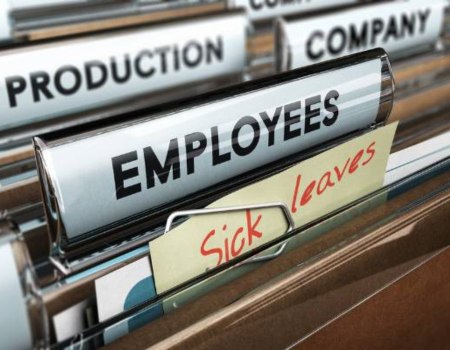Identifying and preventing FMLA abuse
The Family and Medical Leave Act provides important protections for employees. Some employees take advantage of these protections to get time off for ineligible purposes. You can identify common forms of FMLA abuse and put the right policies in place to prevent it in the future.
What is the FMLA?
Before we dive into FMLA abuse, it’s essential to understand the valid and intended uses of FMLA leave. The Family and Medical Leave Act (FMLA) is a federal employment law that provides job-protected unpaid leave for employees who need time off for a medical condition or eligible family event (such as the birth of a child or caregiving for a seriously ill family member). FMLA regulations allow up to twelve weeks of leave within a single 12-month period taken as extended or intermittent leave.
Legitimate uses of FMLA leave include:
-
Taking time off following the birth of a child or for family bonding and care within the child’s first year of life. Employees may also take time off within the first year of placement when fostering or adopting a child.
-
Dealing with a serious health condition that makes the employee unable to perform the essential functions of their job. Employees may take time off to receive medical treatment or when incapacitated and unable to perform one or more important job functions due to their condition.
-
Caring for a spouse, child, parent, or other eligible family member with a serious health condition.
-
Military caregiver leave and other qualifying difficulties related to a spouse or immediate family member on active duty.
What constitutes FMLA abuse?
FMLA abuse occurs when an employee improperly uses their FMLA leave. An employee uses FMLA leave when it is not needed. This happens in connection with the severe health condition or family member caregiving responsibilities listed on their medical certification form.
Employees can do this with a legitimate FMLA case. They may take advantage of the flexibility provided to take a vacation or long weekend without a valid FMLA-related need. Employees may commit FMLA fraud if they falsify documents related to their FMLA request. Employees may also misrepresent their condition or need for time off.
FMLA abuse is a contentious legal issue that has led to many lawsuits. For this reason, employers should be very thorough in documenting and investigating suspected abuse or fraud before terminating an employee or taking other adverse actions. Employers need to be able to prove that they had an honest belief that abuse was occurring in case they are challenged for wrongful termination or other claims in court.
Typical forms of FMLA abuse
FMLA abuse can take a few different forms. The most common are explained below. Be on the lookout for these and other suspected instances of FMLA abuse.
Misrepresenting the need for FMLA leave
Sometimes, employees may misrepresent their need for leave when submitting an FMLA request. This can occur by falsifying certification documents or changing the dates on certification forms to extend the end date of their leave beyond what the medical provider recommended.
Employers may contact the signing healthcare professional to verify the validity of the documents submitted or ask for clarification, so employers doing their due diligence will often uncover instances of document falsification fairly quickly.
The other form of misrepresentation that may be harder for employers to spot is an employee misrepresenting their need for leave to the healthcare provider themselves. They may be dishonest about how their symptoms impact their ability to work or what caregiving duties they will do for a family member. Not everyone with a health condition or who has a family member dealing with health struggles is entitled to FMLA leave.
Using FMLA leave to call out for ineligible purposes
Employees take intermittent leave under the FMLA. They have more freedom to call out of work without penalty when their symptoms flare up or they need to access care for themselves or an eligible family member. However, this system does leave room for misuse. Employees may attempt to stack their FMLA leave with vacation or holiday weekends to get extra time to enjoy themselves. Some employees may also call out for things like hangovers, social events, or other personal days off unrelated to their active FMLA claim.
Using FMLA leave to avoid undesirable work obligations

There will be times when employees have to miss major work events for valid FMLA-related reasons. Still, some may start calling out or trying to schedule treatment appointments to avoid work obligations that they deem undesirable or days that are expected to be very busy.
Employers do have some recourse here. The U.S. Department of Labor (DOL) has stated that once an employer can establish that an employee’s scheduling practices are unduly disrupting its operations, the employee “must try to arrange treatment on a schedule that accommodates the employer’s needs.” That being said, sometimes scheduling changes are not possible.
How to prevent FMLA abuse
Avoid making assumptions
Before you accuse employees of FMLA abuse, it’s important to keep a level head and avoid making assumptions about the employee and their condition. Experiences, symptoms, and severity levels can differ strongly between individuals with the same medical diagnosis. One employee taking more time off than another with a similar condition shouldn’t necessarily raise suspicion.
Some conditions flare up more during the hot or cold months. This means someone taking more time off during the summer or around the winter holidays isn’t always abusing FMLA leave.
Maintain up-to-date medical certification forms
Suppose an employee requests time off for a serious health condition or a family member’s serious health condition. In that case, requesting a medical certification from a health professional to verify the situation is a good idea. Employers technically don’t have to ask for a certification form before approving leave, but those who do not leave themselves open to FMLA abuse.
It’s also a good idea to verify the authenticity of the forms submitted. Employers may contact the doctor’s office to confirm that the document submitted by the employee is authentic. The employer may not request additional medical information. Human resources or another party other than the employee’s supervisor should handle the verification request.
It’s also important to remember that the onus for updating medical certifications is on the employer. You can request a recertification form once the initial one expires. If the certification form doesn’t specify a time limit or expiration date, you can typically request recertification no more than once every 30 days. However, if you receive information that indicates potential FMLA abuse or that there has been a significant change in the employee’s condition, you may request recertification early.
Get a second opinion when needed
Employers are allowed to request a second opinion if they have reason to doubt the validity of the first certification. Employers must pay for this. They can select a neutral local healthcare provider and have them meet with the employee to complete a new FMLA certification. If the second opinion aligns with the initial certification provided, the employer will need to approve the leave request. However, if the two opinions conflict, a third opinion may be pursued to provide a final determination.
Keep detailed documentation
Employers should keep clear records of all absences, requests, and communications related to employees’ FMLA leave. Keeping a paper trail for compliance purposes and documenting or uncovering suspected FMLA abuse is essential.
 It’s important to have a clear call-in policy for employees using intermittent leave. This policy should include how they should call out. The policy should require employees to specify they are using FMLA leave. It should also include a documentation procedure. This helps to keep accurate records of FMLA absences.
It’s important to have a clear call-in policy for employees using intermittent leave. This policy should include how they should call out. The policy should require employees to specify they are using FMLA leave. It should also include a documentation procedure. This helps to keep accurate records of FMLA absences.
This documentation can be used to look for patterns in the employee’s use of FMLA that might indicate suspected abuse. If an employee has been approved intermittent FMLA leave and consistently calls out on Mondays, Fridays, the day after holidays, or in a manner that would extend their scheduled vacation, that can be a red flag.
Remember, not all patterns spell out abuse. They may be emerging due to some part of the employee’s weekly routine. A specific day of the week at work may be more strenuous, stressful, or labor-intensive, leading to flair-ups that require the employee to call out the following day. An employee may have dialysis on Thursday after work and frequently feel too ill to come to work the next day. Since that day happens to be Friday, it may look like they are just trying to extend their weekend when they technically are using FMLA leave for its intended purpose.
Conduct thorough investigations
Employers can investigate FMLA abuse in a few other ways, in addition to requesting updated certifications and watching for patterns. Many employers utilize social media to aid in FMLA investigations. Some people tend to overshare on social media, including sharing information that may point to FMLA fraud.
For example, employers may see that an employee called out under FMLA leave. The employee was actually catching a flight and getting a head start on their upcoming scheduled vacation. They stacked time off. There may be patterns of employees posting photos from concerts or nightclubs. They posted these photos the evening before they called out citing FMLA leave. Employers can engage private investigators to investigate employees suspected of FMLA abuse.
Still, be cautious when bringing a case of FMLA abuse against an employee. An employee recovering from foot surgery might be able to do that during a scheduled family vacation at the beach. Rock climbing? Not so much.
More Resources:
Intermittent FMLA leave management: The legal way to prevent abuse
FMLA pregnancy leave — everything employers and employees need to know
FMLA return to work guidelines for employers





